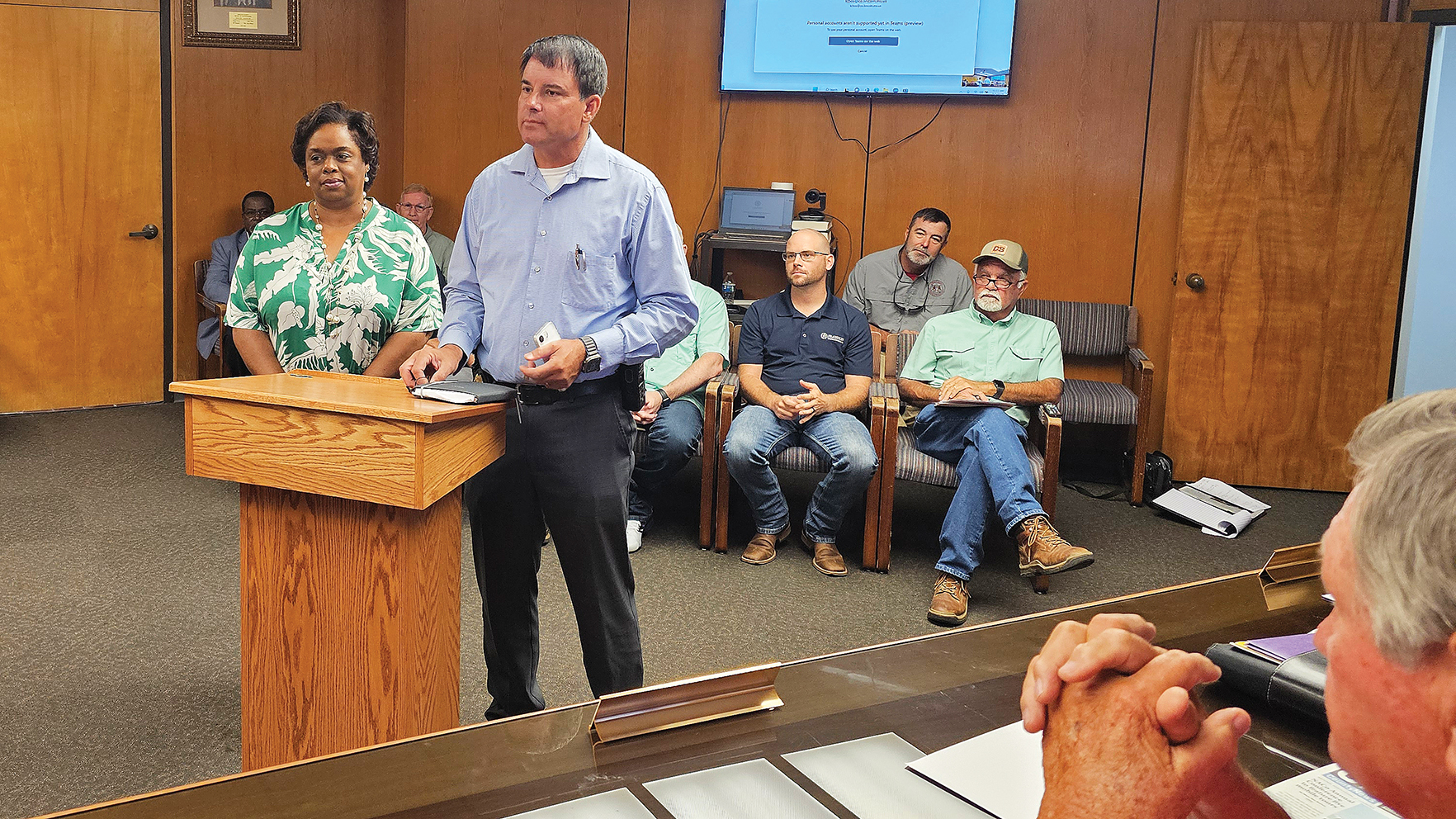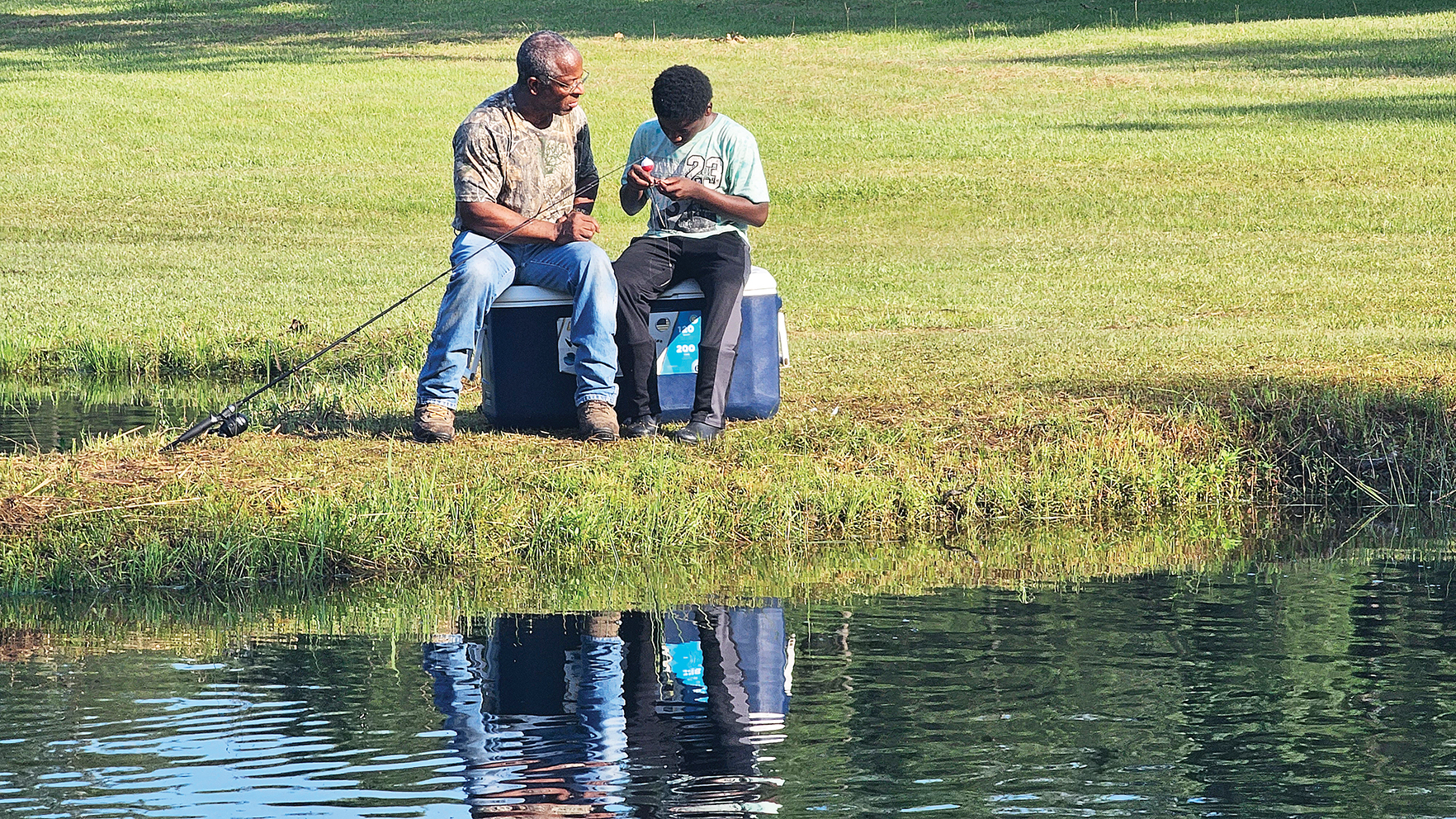Forest Spotlight: Planning for a prescribed fire
Published 9:00 am Thursday, July 18, 2024

- A lot goes into prescribed fire on the Homochitto National Forest. Pictured is a dormant season burn in Lincoln County. (File Photo)
BUDE — A map with burn blocks marked out is tacked to a bulletin board in Trey Bolt’s office. He is the Fire Management Officer for the Homochitto National Forest.
Bolt works in tandem with the HNF District Ranger Shaun Williamson, Mississippi Forestry Commission and local agencies to complete thousands of acres of prescribed fire each year. It might seem daunting to anyone who walks into Bolt’s office.
The Homochitto has about 190,000 acres of forestland spread out across seven counties. Of the 190,000, about 32,000 acres have to be burned each year on average to meet objectives listed in the national forest strategic plan.
Trending
Planning phase
Prescribed fire has a lot of moving parts and the most important aspect is planning. Bolt said the plan is usually where they are going and who they are working with.
Before a prescribed burn can ever start several other steps have to be met first. Bolt has to make sure he isn’t burning in places where there are timber sales, avoid high traffic recreational areas and work with archaeology before bulldozers can make the firebreaks.
“We start with any blocks which haven’t been burned in three years, typically we do a 1 to 3 year rotation,” Bolt said. “Sandy Creek WMA has a longer rotation because it is mostly hardwoods. We try to do cool season, low intensity burns there. Planning is working with everyone on what is the highest priority.”
One of the species of highest priority for most of the national forest is the Red-Cockaded Woodpecker. Red-Cockaded Woodpeckers are dependent on mature open pine forests which are maintained with a frequent fire regime. In 1992, Homochitto National Forest set a goal to have 250 breeding pairs of Red-Cockaded Woodpeckers in 35 years.
According to the HNF action plan, 200 breeding pairs of Red-Cockaded woodpeckers are on the national forest and they look poised to meet a goal of 250 breeding pairs by 2025. Areas of habitat for the woodpeckers are burned before any other blocks, especially if Bolt is on the fence about which block to prioritize.
Trending
Prep phase
Before a prescribed fire can ever be lit there are several preparatory steps which must take place in a burn block. Bolt said the prep phase is the most time consuming to get a burn block ready.
Bulldozers are often used to establish a firebreak but the Homochitto National Forest’s topography can be a challenge. Bolt said in some areas a firebreak has to be put in by hand. Leaf blowers help a lot, especially in hardwood stands.
Dead trees must be treated so they do not potentially fall across the firebreak and allow fire to get out of the designated area. It may be the greatest focus this year with nearly 12 million pine trees across Mississippi dead from drought stress and a pine beetle outbreak.
Infrastructure needs to be protected too. Bolt said telephone poles, oil wells and culverts need to be prepped before a burn can take place. This is usually done with hand lines or soaking down an area with water the day of the burn with an engine.
Bolt said they know areas where the red-cockaded woodpecker live and they go in and brush hog around the colony to protect the trees from catching fire. The Woodpeckers carve out dens in the live pine trees and in doing so allow for pine resin to flow down the tree, pine resin is very flammable and too high of flame height could cause problems.
“It is a huge undertaking,” Bolt said. “Getting those lines in, we usually get in folks from out west for detail work. If they are looking for work at the end of their fire season. They come here to get experience.”
The National Forest uses a burn plan for every acre they have. It lays out the objectives of their burns and has ranges for humidity, transport winds and fuel content to get the best desired effect.
Bolt said whether they burn in January or May, the Forest Service is looking for the same effect.
“You get different effects from the fires but you are still meeting the objectives,” Bolt said.
BUDE — Like Friday Night Football, or the big race, burn days on the National Forest is when all of the hard work pays off. Bolt said the burn day is fun for most people, although it can be a little stressful.
Weather conditions and forecasts can change on a dime and throw wrenches in the plans. Bolt said going into the burn it can be hectic.
“It is the fun day, the easiest day because you get to see everything come together and you can look on and see we have done good,” Bolt said. “It is hectic though. We get to the office early. It starts really days before looking at the forecasts. Some blocks can burn with any wind conditions while others need specific winds. Blocks in a 10 mile radius of schools, hospitals and cities really have to be planned carefully.”
Planning never stops
The planning never stops due to the weather conditions. Bolt looks at forecasts for the next day and three days out. USFS utilizes spot forecasts from the National Weather Service to plan where they will burn. The Mississippi Forestry Commission then issues the permit for the Forest Service to burn.
One aspect of burn days is the smoke modeling used in planning to burn. Bolt said their goal is to never send a lot of smoke towards a city but smoke is going to happen especially in stands which haven’t been burned in some time.
“Burning is easy but the smoke is difficult. It is ours and we do try to track and forecast but the conditions aren’t definite,” Bolt said. “We run several different models. We have some models that do better for night. We look at AirNow and if we see an orange category for an area we can’t send smoke towards them.”
If all of the forecasts, models and conditions lineup then Bolt has a meeting with District Ranger Shaun Williamson and goes over the burn plan. Each burn is different though.
Starting the burn
Bolt said they try their best to ensure there are no hunters, hikers, horse-back riders or other recreational users in the burn blocks when they start. Usually burn days are carried out on days with low forest use such as during the week or outside of hunting season.
Starting the prescribed fire is pretty simple. Helicopters and drones can start prescribed burns via aerial ignition to cover larger burn blocks while hand ignition works for smaller blocks around 800 to 500 acres in size.
Another method to start the prescribed fire is the use of paintball guns which shoot a ball to start fires to cover greater areas.
Each burn is different and sometimes conditions change with smoke. Bolt said if the smoke decides to settle at night they will have crews on hand to keep smoked out roadways safe.





